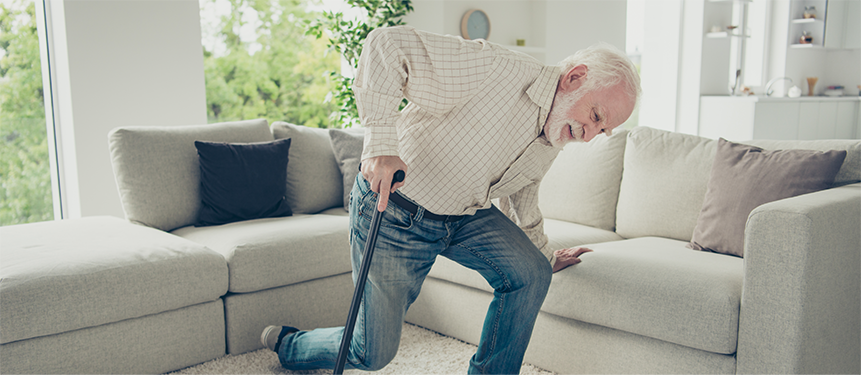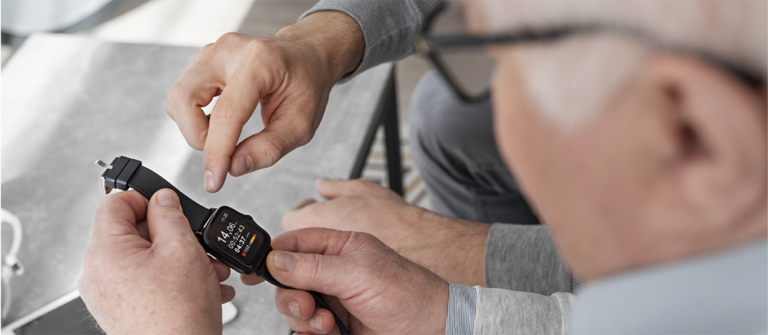
In today’s rapidly evolving society, we must prioritize the well-being and autonomy of older adults and individuals with mobility or balance challenges. Enter the world of fall alert systems: sophisticated technology designed to safeguard the independence of these vulnerable groups.
These devices are far more than mere gadgets; they act as critical lifelines, significantly enhancing the safety and self-reliance of their users.
Designed for anyone from independent elderly residents to individuals with conditions that heighten their fall risk, these systems are a source of comfort and security.
Grasping the Essence of Fall Alert Systems
At their heart, fall alert systems utilize state-of-the-art sensors and algorithms to identify falls, swiftly notifying caregivers or emergency responders. This ensures timely assistance, potentially saving lives. The technology behind these systems involves accelerometers and GPS tracking, meticulously analyzing the user’s movement patterns to detect abnormal activities suggestive of a fall.
Upon detecting a fall, these systems activate a well-structured protocol. Connected devices alert a monitoring service, which then promptly evaluates the situation and, if necessary, dispatches emergency services. For systems without a direct link to a monitoring service, notifications are sent to caregivers or family members, often via a smartphone application, indicating the occurrence of a fall.
These devices’ portability and ease of use are critical; they come in various forms, like pendants, emergency buttons, and even smartwatches, ensuring an option fits everyone’s lifestyle and comfort.
Innovations in Fall Detection
As discussed in a recent research article, a comprehensive analysis of fall detection technologies illuminates the forward strides in this field. The study delves into the application of smartphone accelerometers for fall detection, presenting a critical advancement in making this technology accessible and efficient. The exploration involved screening numerous studies and selecting those that offer practical, app-based solutions for fall detection using smartphone accelerometers.
These studies revealed a range of methodologies for fall detection, from threshold-based to machine-learning approaches, indicating the potential for real-time detection and alerting. The review emphasized the importance of designing experimental setups that closely mimic real-life scenarios, ensuring the algorithms developed can effectively distinguish between daily activities and falls. It also noted the need for rigorous testing and validation processes to confirm these systems’ efficacy in real-world applications.
Moving Forward with Fall Detection Technology
This insightful review highlighted the current capabilities of fall detection technology and outlined critical recommendations for future research. It calls for a more nuanced understanding of end-users habits and preferences, ensuring that the technology developed aligns with their real-world needs and behaviors. Additionally, it stresses the importance of embracing advanced machine-learning techniques to enhance the accuracy and reliability of fall detection systems.
As we continue to refine and advance this technology, it promises to protect and empower, enabling individuals to live their lives with greater confidence and independence.
Benefits of Fall Alert Systems
Fall alert systems stand at the forefront of combining technology with care, offering significant benefits that transform the lives of users and their families. The most striking advantage is the promise of rapid emergency assistance. When every second counts, these systems ensure that help comes as soon as possible, potentially averting grave consequences.
In essence, the role of fall alert systems transcends mere emergency response; they are instrumental in eliminating the dread associated with falls, instilling a robust sense of safety that nurtures a more autonomous and enriched lifestyle for seniors and individuals facing mobility or balance issues.
Ideal Candidates for Fall Alert Systems
These devices cater to a broad audience, primarily benefiting:
- Seniors: Particularly those living solo who aspire to safeguard their independence. Since fall risk escalates with age, a dependable fall alert system becomes indispensable to their daily existence.
- Individuals with certain medical conditions, including those with mobility impairments, a history of falls, or ailments such as Parkinson’s disease, epilepsy, or severe arthritis. For them, fall alert systems offer a crucial safety layer, ensuring swift access to help if needed.
- Solo Dwellers: Age notwithstanding, individuals living alone should deliberate on the advantages of a fall alert system. Without immediate company, these systems guarantee that aid is always within reach, mitigating the dangers of being alone during a fall.
Selecting a Suitable Fall Alert System
Finding the perfect fall alert system is a process that demands careful consideration of the user’s lifestyle, needs, and preferences. Here are some pointers to guide this selection:
- Assess the Lifestyle: Is the user mostly indoors, or do they enjoy outdoor activities? A mobile system with GPS tracking is advantageous for the active user, while stationary systems are adequate for homebodies.
- Range and Connectivity: It’s crucial to ensure the device covers the entire living area for in-home systems. Choosing between landline and cellular options will depend on the reliability of these services in the user’s locale.
- Battery Life and Charging: Opt for devices with extended battery life to minimize charging frequency, ensuring constant readiness. Charging convenience, possibly through docking stations, should also be considered, especially for those who find cable connections cumbersome.
- Water Resistance: Since falls can occur in wet areas, selecting a water-resistant device is essential. This feature ensures the device’s functionality in showers or baths.
- Additional Features: Beyond the basic requirements, evaluate whether features like two-way communication or health monitoring could offer added value.
By meticulously evaluating these criteria, individuals can choose a fall alert system that seamlessly integrates into their lives, providing security and enhancing their independence and quality of life.
Overview of Popular Fall Alert Systems
Fall alert systems are essential in modern healthcare and personal safety, providing peace of mind for users and their loved ones through enhanced security measures. Organizations like the National Council on Aging (NCOA) have rigorously analyzed various systems, focusing on factors such as accuracy, battery longevity, and the quality of customer support. Their evaluations serve as invaluable resources for those navigating the complex landscape of fall detection technology.
These systems vary widely, ranging from wearable gadgets like pendants and smartwatches to advanced mobile solutions, all designed with the user’s well-being as the priority. Some require an additional wearable for fall detection, capable of sensing abrupt changes in motion. In contrast, others incorporate this feature into an all-in-one device, balancing simplicity with comprehensive safety features.
The assortment of available systems means there’s something out there for everyone, regardless of their specific needs or lifestyle.
Incorporating Fall Alert Systems into Everyday Routines
Adopting a fall alert system into daily life is crucial for its success. Here are several strategies for users and caregivers to ensure the system offers optimal protection:
- Consistent Usage: The efficacy of a fall alert system hinges on its constant presence. It’s imperative to wear the device consistently, especially in areas where falls are more likely, such as bathrooms.
- Proper Placement: Ensuring the device is worn correctly, either around the neck or wrist, as advised, is critical for effective fall detection and user comfort.
- Regular Testing: As the manufacturer recommends, periodic testing is essential to confirm the device’s operational status. This includes monitoring battery levels and maintaining a full charge.
- Maintenance: Keeping the device clean and following the manufacturer’s care instructions will help preserve its functionality and longevity.
- Learning the System: Familiarizing yourself with all the features of your fall alert system, including how to dismiss false alarms or activate a distress signal, is crucial.
- Communication: Ensure that family members and caregivers are informed about how the fall alert system works and what actions to take in response to an alert.
By integrating these practices into daily life, users can fully leverage the protective benefits of their fall alert systems, making them a dependable aid in preserving autonomy and safety.
Conclusion
The market offers a variety of systems tailored to meet different preferences and requirements, ensuring an option for every need. By making these systems a part of daily life, individuals can enjoy greater security, knowing that assistance is available momentarily.
For those embarking on this journey, starting with a guide to the top fall-detection medical alerts can provide a solid foundation, helping you make a well-informed choice. Remember, evaluating your needs and conducting thorough research is essential in enhancing safety and peace of mind.








